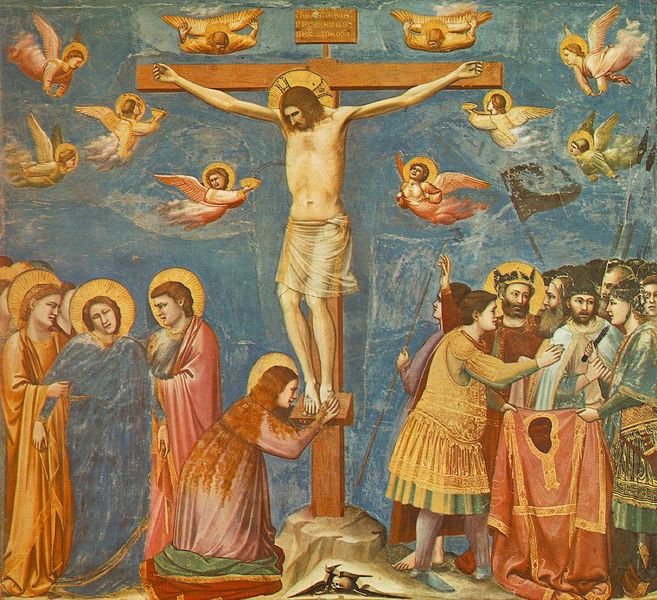Today is Palm Sunday. In five days time it will be Good Friday, which falls, this year, on a date pregnant with significance in the Christian calendar, namely 25 March, the Feast of the Annunciation. As coincidence would have it, Good Friday also marks the 600th anniversary of the consecration of the Arena Chapel in
The gaunt, pathetically emaciated figure of the Saviour hangs from a cross that rises from a rudimentarily painted rock, beneath which a skull can be seen – indicating that this is
The artist was influenced by sacred theatre as well as by the ideal of empathetic piety preached by the mendicant orders of his time, such as the Franciscans. Pictures such as this were intended to help those gazing upon them to feel as though they were eyewitnesses at the Crucifixion itself, and thereby to feel the nature of Christ’s sufferings all the more keenly. Giotto’s design is stylised and symmetrical, the juxtaposition between mourners and soldiers intended...


